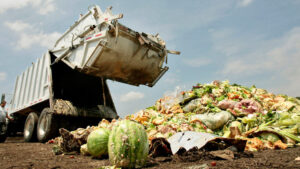The New York Times reports 1.3 billion tons of food are thrown away every year.
Food waste is critical in the U.S. and around the world.
According to The New York Times, 1.3 billion tons of food are thrown away every year around the world.
Markets Insider has stated that waste from food processing is likely to beat the other segments to reach a market valuation in excess of 35 billion-dollars by the end of the forecast period in 2027.
In terms of volume consumption, following the information displayed, the food processing waste segment will touch about 182 million tons by 2027, displaying a growth rate of 5.1%.
Wasting food does not only represent an important loss of economic value, it also complicates meeting the food needs of the global population, as 7 million people are hungry and do not know where their next meal would come from. Just in Somalia and neighbor countries, there are over 20 million people in need of aid and food as they suffer from starvation and diseases.
Dr. Roni Neff, a Johns Hopkins University researcher who led a first-ever study examining the nutrients we’re tossing in the trash, has stated that if we were able to recover all of the wasted food in the U.S., we could provide a 2,000-calorie diet to 84% of the population, stating the urgent and devastating effects of wasting food.
The numbers of waste
Throwing food away means wasting resources and potential nutrients for people in need.
Alarming numbers from the Journal of Nutrition and Dietetics and USA Today determined that just in the U.S., 31% to 40% of food is thrown away after it’s harvested, throwing out more than 1,200 calores per person every single day, which would be enough to feed 74 million women or 48 million men on a daily basis.
However, this results in a contradictory matter, as the U.S. is not a country that can afford to waste food as it is not an ideal place for healthy eating, as high reates of diabetes and obesity have dragged the country down to position 34, studies reveal.
This means that despite the average American men and women do not receive enough dietary fiber and potassium, industrial quantities of food continue to be thrown away on a daily basis.
What’s next? Understanding
In a peculiar matter, a 2013 report by Harvard University and the National Resources Defense Council found that people in the U.S. throw away billions of food simply because they’re confused about food expiration date labels, stating that confusion over food expiration dates –for example, “best by,” “use by,” and “sell by” labels– is a key cause of the high and rising rates of waste in the U.S., so now, supermarkets are trying to make a dent by changing the way best-before labels are used.
Dr. Roni Neff continues explaining that “many times, just because something isn’t as fresh as it once was, doesn’t mean it’s gone bad”, as the most wasted foods were seafood, fruits and vegetables, where these type of confusions most occur.
The federal government has established a national goal to cut food waste by 50% by 2030.
Massimo Bottura one how eliminating waste in the kitchen can result in cash:













